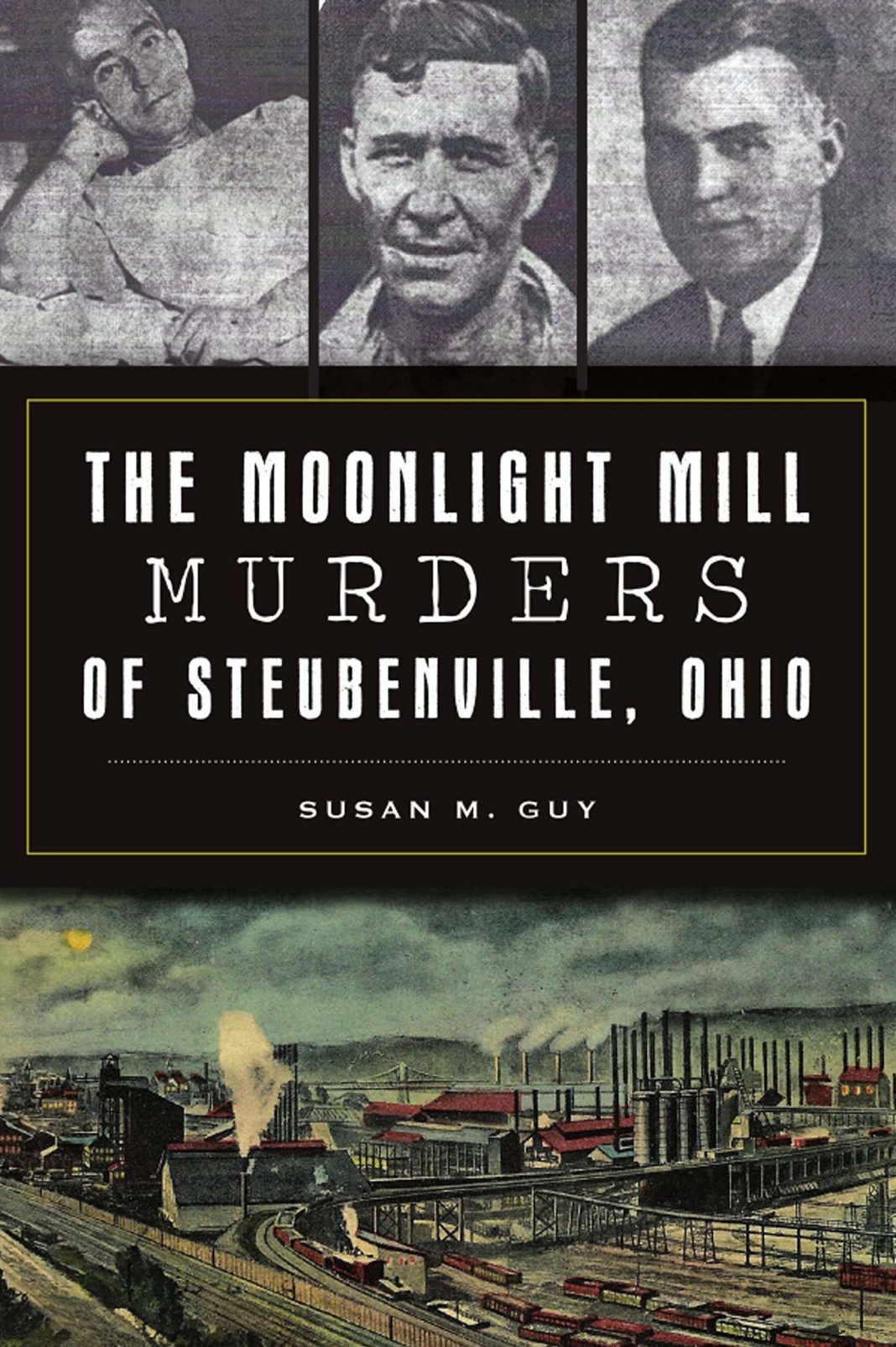
After following historian Kelly Hartman down the deadly Yellowstone Trail, this week we’re privileged to have Susan Guy join us on Crime Capsule.
Can you tell us how The Moonlight Mill Murders came to be?
The book came about through my research into crimes in Steubenville and Jefferson County, Ohio. I was surprised that a so-called serial killer had been so close to where I was born and raised, and that I had never heard about it. When I discussed it with my mother and stepfather at their kitchen table, my stepfather told me that his dad was a boss at Wheeling Steel at that time. He vaguely remembered his dad telling him that the men were fearful to go to work and that everybody wondered who was next. While researching, I discovered that my stepfather’s uncle on his mother’s side, Paul Cash, had actually chased the killer through the mill, with another guy.
During my local book signing events, an older woman approached me and asked if I was ever going to write about the killer at Wheeling Steel. It was at that time that I knew the story needed to be told. It was a part of local history that very few people knew about.
You’ve written for Arcadia/The History Press before. As a historian, what did you learn working on your previous books that you could apply to this one?
One thing I learned was that numerous people wanted to learn more about the characters in my book:—not just that they were murdered, but they wanted to know more about each one of their lives. That meant something to me because that’s how I am. I delve into each person’s life to the very end. I am a genealogist first and foremost, so I learn as much about a person as I can. I was so concerned to get the story written that I may have left out too much about the victims. This book, however, is written a bit differently and will hopefully give people more of an insight into each person who has a significant part in the story.
What kind of material did you use to tell your story? What were your sources?
My sources were court records, old newspaper articles, local history books, census records, death records, files from the Schiappa Library in Steubenville, and from the Jefferson County Historical Museum. Volunteers at both the library and the museum are always eager to help in projects of this kind and I am grateful for their help.
The Phantom Killer of Steubenville is such an incredible story to tell. What kind of legacy do these murders have today?
It is just one of many incredible stories that lend to Steubenville’s notorious past of being known as “Little Chicago.” The Phantom ranks right up there with the other notorious criminals of the time, which you will see when you read the book. There are many more stories to come.
You’ve written about this area in your previous book, Mobsters, Madams, & Murder in Steubenville, Ohio—but you’re also a native Ohioan. Did any aspect of the Moonlight Mill story hit home for you? Did you have any personal connection to any part?
All of the stories that I dig up on Steubenville and Jefferson County—or any story that I become interested in—become personal for me. The people involved in those stories become real, and I want to see how their story ends. I think any genealogist or true-crime writer feels the same way.
Remarkably, alongside your work as a historian you have also served as a sergeant at the Cross Creek Township Police Department. How has your work in law enforcement better equipped you to tell these stories?
The way I look at the crimes and look for clues. I can identify with the officers investigating the case, and their frustration at hitting brick walls, and I may write in legal jargon a little better than someone else. Being a genealogist and a police officer are not much different, really. Both hunt for clues and information about a person. It is tough, and some people are very elusive. You’ve got to stay on course until you find what you’re looking for.
Last but not least, can you tell us about your next project? What are you working on now?
I am working on another true crime book about Steubenville. It will be similar to Mobsters, Madams & Murder in that it will be multiple stories, but a bit different. That is all I can say for now—I keep my projects close to the vest. I will also be working on a book that is more personal to me about the crimes of my great-great-grandfather, which will be set in Fulton County, Pennsylvania. This book was actually supposed to be my first, but I got sidetracked with all the local history of Steubenville—and it keeps sidetracking me because there’s so much to tell!



